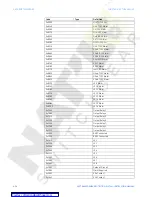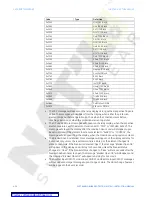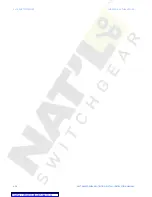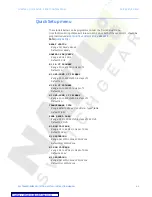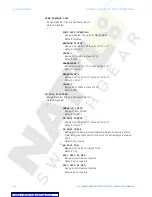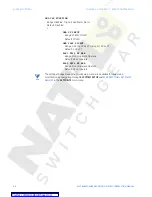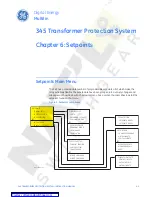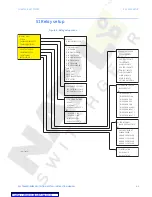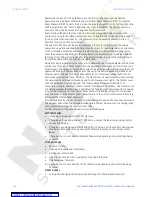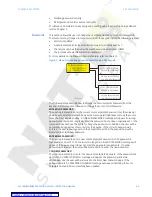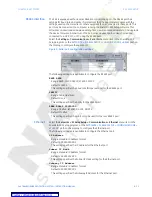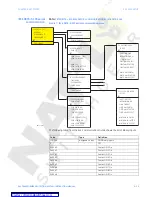
6–2
345 TRANSFORMER PROTECTION SYSTEM – INSTRUCTION MANUAL
SETPOINTS MAIN MENU
CHAPTER 6: SETPOINTS
Setpoint entry methods
Before placing the relay into “
IN SERVICE
” mode, setpoints defining system characteristics,
inputs, relay outputs, and protection settings must be entered using one of the following
methods:
•
Front panel, using the keypad and the display.
•
Front USB port, or rear RS485, Ethernet 100 FX, Ethernet 10/100 BaseT (optional) port,
and a computer running the EnerVista SR3 Setup software supplied with the relay.
•
Rear serial RS485, and a SCADA system running user-written software.
Any of these methods can be used to enter the same information. A computer, however,
makes entry much easier. Files can be stored and downloaded for fast, error free entry
when a computer is used. To facilitate this process, the GE EnerVista CD with the EnerVista
SR3 Setup software is supplied with the relay.
The relay leaves the factory with setpoints programmed to default values, and these
values are shown throughout the setpoint message illustrations. Some of these factory
default values can be left unchanged whenever they satisfy the application.
At a minimum, the
S2 SYSTEM SETUP
setpoints must be entered for the system to function
correctly. To safeguard against the installation of a relay into which setpoints have not
been entered, the
Relay Not Ready
self-test warning is displayed. In addition, the critical
failure relay will be de-energized. Once the relay has been programmed for the intended
application, the
S1 RELAY SETUP/ INSTALLATION/ RELAY STATUS
setpoint should be
changed from “
Not Ready
” (the default) to “
Ready
”.
Common setpoints
To make the application of this device as simple as possible, similar methods of operation
and similar types of setpoints are incorporated in various features. Rather than repeat
operation descriptions for this class of setpoint throughout the manual, a general
description is presented in this overview. Details that are specific to a particular feature are
included in the discussion of the feature. The form and nature of these setpoints is
described below.
•
FUNCTION setpoint
: The
<ELEMENT_NAME> FUNCTION
setpoint determines the
operational characteristic of each feature. The range for these setpoints is two or
more of: “Disabled”, “Enabled”, “Trip”, “Alarm”, “Latched Alarm”, and “Control”.
If
<ELEMENT_NAME > FUNCTION
: “Disabled”, the feature is not operational.
If
<ELEMENT_NAME > FUNCTION
: “Enabled”, the feature is operational.
If
<ELEMENT_NAME > FUNCTION
: “Trip”, then the feature is operational. When an
output is generated, the feature declares a Trip condition, and operates the Trip relay
(output relay 1), any other selected aux. output relays, and displays the appropriate
trip message.
If
<ELEMENT_NAME> FUNCTION
: “Alarm” or “Latched Alarm”, then the feature is
operational. When an output is generated, the feature declares an “Alarm” condition
which operates any selected aux.output relays and displays the appropriate alarm
message.
If
<ELEMENT_NAME> FUNCTION
: “Control” the feature is operational. When an output
is generated, the feature operates any selected output relays. The “Trip”, “Alarm”, and
“Control” function setpoint values are also used to select those operations that will be
stored in the Event Recorder.
•
RELAYS (3–6) setpoint
: The
<ELEMENT_NAME> RELAYS (3-6)
setpoint selects the
relays required to operate when the feature generates an output. The range is any
combination of the Auxiliary relays (Auxiliary Relays 3 to 6).
•
PICKUP setpoint
: The
<ELEMENT_NAME> PICKUP
setpoint selects the threshold
above which the measured parameter causes an output from the measuring element.



